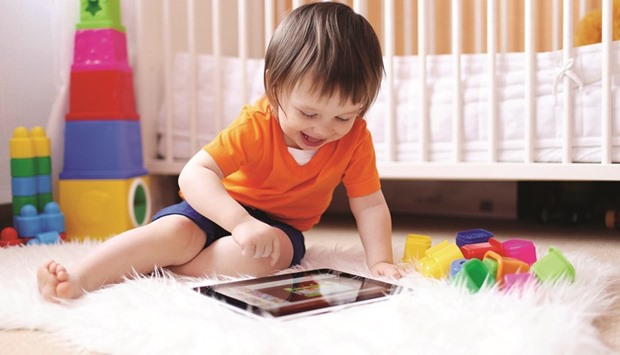In today’s media-saturated world, nearly every parent has handed a kid a smartphone or a tablet for learning or play. And nearly every parent has wondered if it’s OK.
New guidelines released last week by the American Academy of Paediatrics (AAP), and co-authored by two Seattle experts, suggest that media use is nearly inevitable, but it’s up to parents to closely monitor their children’s digital diets from the start.
Researchers say too much media or the wrong type of content may affect kids’ health and development and interfere with relationships with family and the larger world.
For babies and toddlers, kids younger than 2, video-chatting with Grandma is fine, but that’s about it, said Dr Dimitri Christakis, a paediatrician and researcher at Seattle Children’s.
Other digital media should be avoided, especially before 18 months, and after that they should contain only high-quality content experienced with a parent, not alone.
“Babies need laps more than apps, to be sure,” said Christakis, who is lead author of the guidelines for children from newborns to age 5.
For kids ages two to five, media should be limited to one hour a day – down from the two hours included in previous recommendations. Again, media should focus on high-quality programming – the authors mention Sesame Street – and the experiences should be shared by parents and kids.
That’s because in children older than three, digital media may help teach kids new concepts, but in younger children the brain isn’t developed enough to transfer the two-dimensional view of the screen to the real world, research has shown.
While they’re at it, parents should avoid using smartphones or other devices as the main way to distract or calm small children, Christakis noted.
“Children need to learn to self-regulate their emotions,” he said.
With older kids, those ages six to 18, parents need to be even more proactive, said Dr Megan Moreno, an investigator at Seattle Children’s Research Institute and lead author of the guidelines for older kids.
There are no hard-and-fast limits on hours spent engaged with phones, tablets, computers and video games. Instead, parents and other caregivers should develop a family plan that regards digital-media use as one component of a healthy life.
“We have moved beyond the one-size-fits-all approach we had in the past,” said Moreno.
To help, the AAP has created an interactive, online tool, the “Family Media Use Plan”, to use as a guide. Find it at www.HealthyChildren.org/MediaUsePlan
Parents need to work out consistent limits to ensure that time spent with digital media doesn’t disrupt adequate sleep, physical exercise, family communication and other healthy behaviours.
In particular, the guidelines recommend enforcing media-free family times during meals and for an hour each night before bedtime. Devices should be banned from bedrooms, where 10 years of research show they can interfere with healthy sleep patterns in kids, Moreno said.
All this is easier said than done, said Moreno, who consults with Seattle-area parents and kids regularly in her paediatric clinic.
“In more than half my visits with new patients, something about media is coming up,” she said. “If it’s a visit about sleeping or fatigue, it’s media. If it’s abdominal pain, it may be linked to bullying and that has an angle to technology. It’s just woven into the fabric of our existence.”
In 1970, children typically began watching TV at age four. Today, children begin interacting with digital media at four months, research has shown.
In 2013, three-quarters of kids ages newborn to eight had access to a mobile device, according to a national survey of parents.
Too much media use has been linked not only to sleep problems but also to obesity. Limited research suggests it may also affect child development.
Finally, parents need to monitor their own media use around kids as well, Christakis said.
“It’s distracted parenting,” he said. “You can’t parent as well when you’re checking your phone.”



